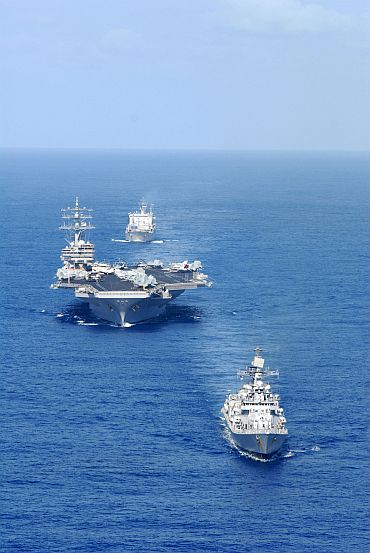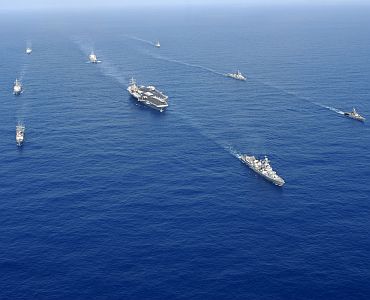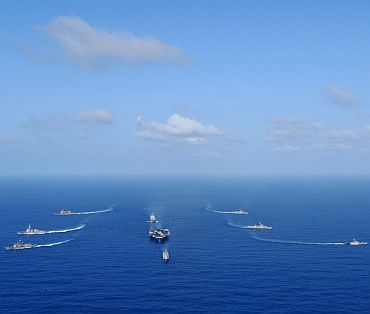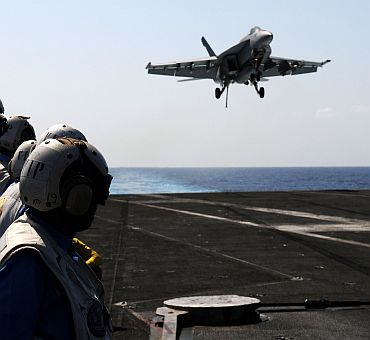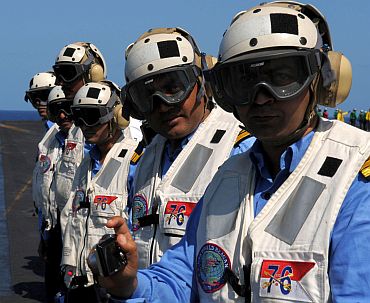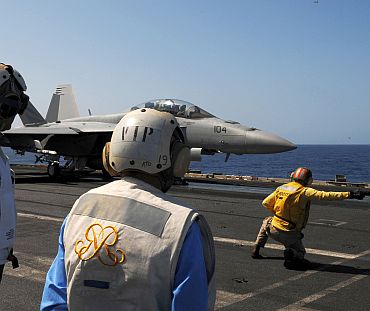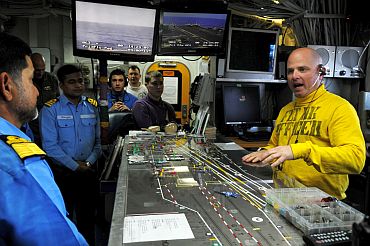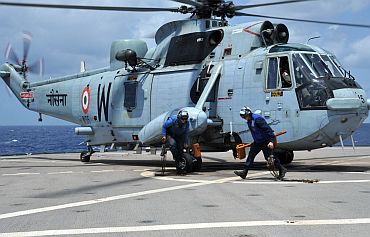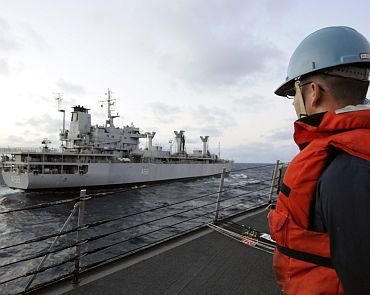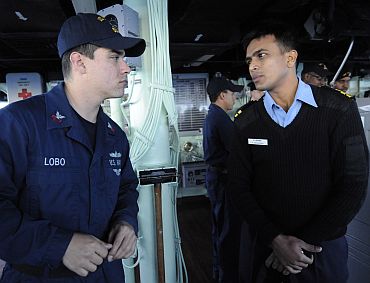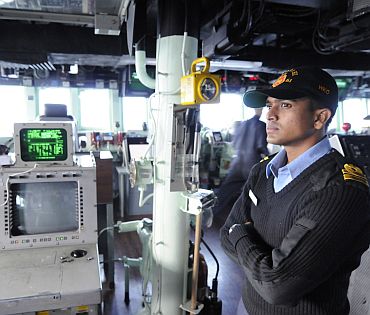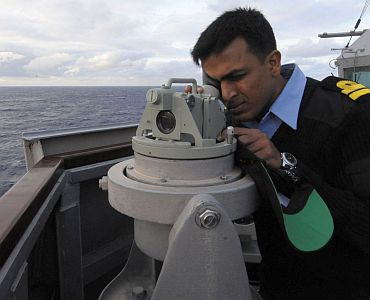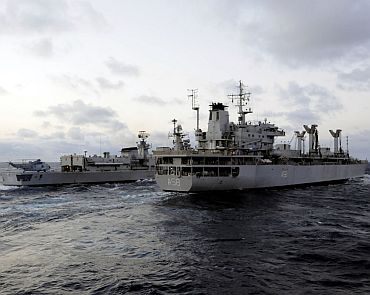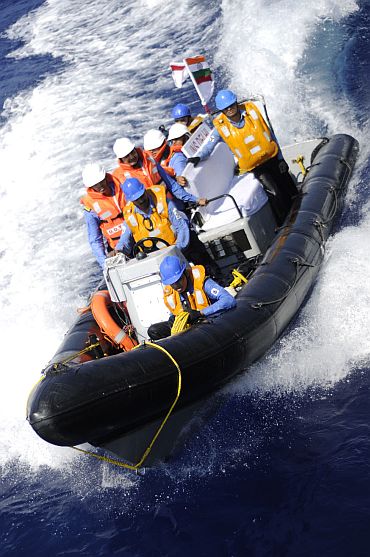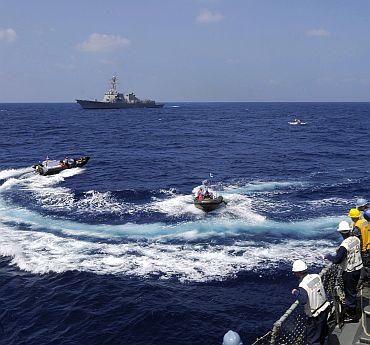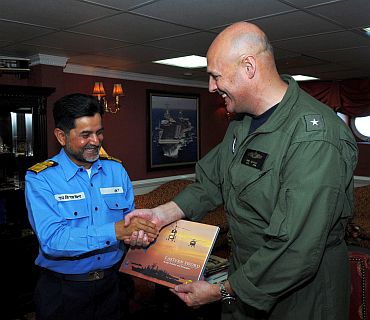 | « Back to article | Print this article |
When Indian and US navies met in Pacific
Navies of India and the United States recently took part in the annual Malabar training exercise.
Malabar 2011 is the latest in a continuing series of exercises conducted to advance multinational maritime relationships and mutual security issues.
The bilateral naval field training exercise has grown in scope and complexity over the years.
Click on NEXT to see PHOTOS of Malabar 2011...
When Indian and US navies met in Pacific
The strike group brought new participants to join Malabar including Carrier Strike Group 7; Destroyer Squadron 7; Carrier Air Wing (CVW) 14; USS Chancellorsville (CG 63); and USS Pebble. These additions brought approximately 5,000 Sailors to the exercise to work with other US Navy units already participating since April 3 which include USS Stethem (DDG 63); USS Sterett (DDG 104); USS Reuben James (FFG 57); and a nuclear-powered attack submarine.
Indian Navy was represented by INS Delhi, INS Ranvijay, INS Ranvir, INS Jyoti and INS Kirch.
When Indian and US navies met in Pacific
The at-sea portions were conducted in the western Pacific Ocean, east of the Luzon Strait and east of Okinawa.
The location coincided with the Indian Navy's western Pacific deployment.
When Indian and US navies met in Pacific
Events planned during the exercise included liaison officer professional exchanges and embarks; communications exercises; surface action group exercise operations; formation maneuvering; helicopter cross deck evolutions; underway replenishments; humanitarian assistance and disaster relief; gunnery exercises; visit, board, search and seizure; maritime strike; air defense; screen exercise; and anti-submarine warfare.
When Indian and US navies met in Pacific
"I've seen two Malabar exercises as a pilot and there's always a lot for the Indian navy to learn and the American navy as well," said Srinivasan. "The exercise is very important Very important. You don't really know how well two navies will perform together until you operate together."
When Indian and US navies met in Pacific
When Indian and US navies met in Pacific
"This exercise helps us strengthen our interoperability and work on strategy. We have common goals and interests in this region and I'm sure this exercise will be a success," he added.
When Indian and US navies met in Pacific
"In today's global environment all actions are in conjunction with a multilateral partner," said Miller. As the U.S. and India are two of the largest democracies in the world, it's important to conduct exercises like Malabar so we're able to work effectively."
When Indian and US navies met in Pacific
Miller also commented on how Malabar strengthens ties between people of each Navy.
"Any time we're able to work with the Indian Navy our ties are strengthened. A major component of the exercise is trading liaison officers and having officers from their Navy, Marine, and Special Operations board our ships as well as having our officers board theirs," said Miller.
When Indian and US navies met in Pacific
"One of our big objectives is theater security operations. That involves strengthening ties, freedom of seas, combating piracy, and helping secure worldwide trade. The Indian Navy provides a big piece of that and this exercise prepares us for any future requirements," said Miller.
When Indian and US navies met in Pacific
Miller added that the cross-training between the two navies made the exercise a success.
"My crew learned a lot. We had very successful training with special warfare teams, and operations with other ships. Being able to meet CO's from Indian vessels was a great opportunity to share experiences," said Miller.
When Indian and US navies met in Pacific
When Indian and US navies met in Pacific
